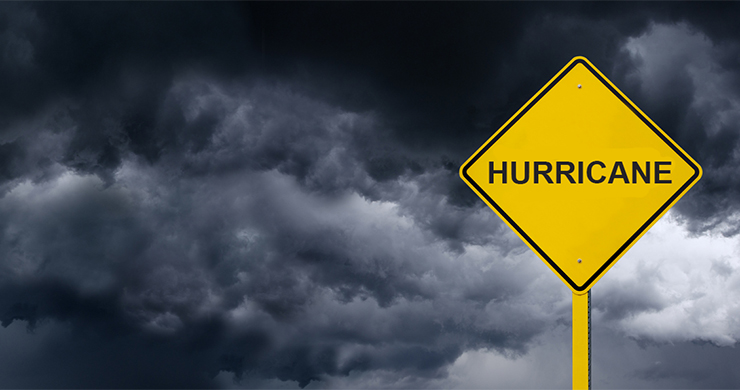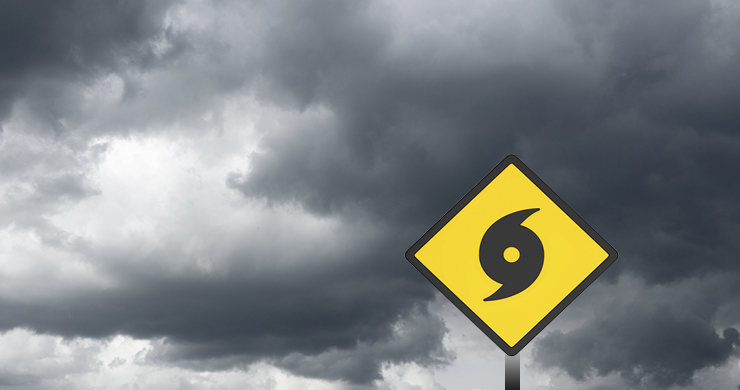Explaining Low Air Pressure
- Air pressure is the pressure within the atmosphere of Planet Earth.
- Air pressure is mostly (nearly all of it, nearly all of the time) the weight of the atmosphere above the surface point where the air pressure is measured.
- As we go higher in altitude the air pressure will normally go down as there is less air above.
- Sometimes scientific names for air pressure are used; these are; Atmospheric Pressure or Barometric Pressure.
- Normal air pressure at sea level is 1013 mbar.
Plastic bottle sealed at 14000 feet (4,267 metres)
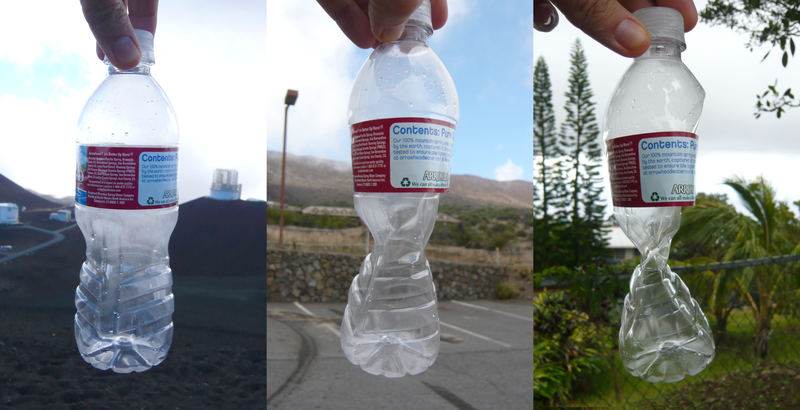
Image: Plastic bottle at 14000 feet, 9000 feet and 1000 feet, sealed at 14000 feet © Wikimedia Commons
Picture 1: 14,000 feet (4,267 metres)
Picture 2: 9,000 feet (2,743 metres)
Picture 3: 1,000 feet (305 metres)
The air sealed in the bottle up a mountain at 4,267 metres was at a lower air pressure; as it has been brought down the mountain the higher pressures have crushed the bottle.
This graph shows how air pressure decreases with altitude (height)
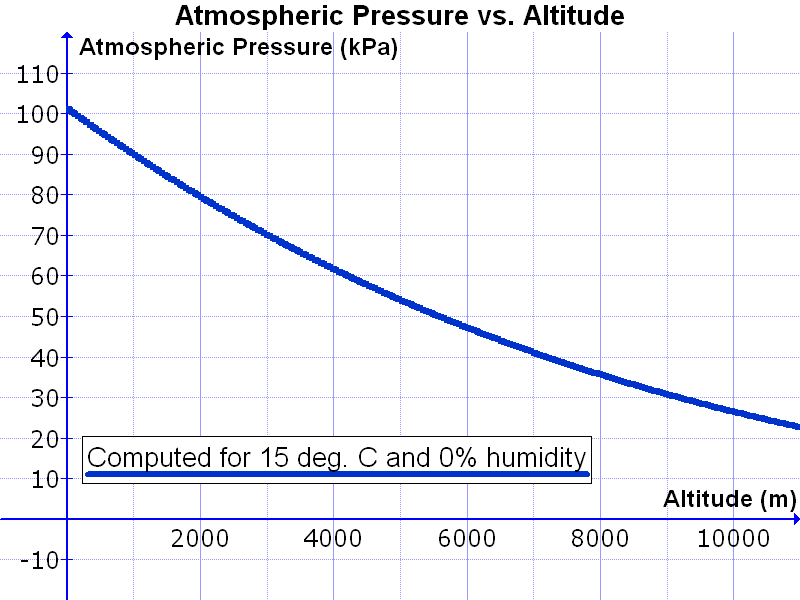
Image: Atmospheric Pressure vs. Altitude - Geek.not.nerd © Wikimedia Commons under the Creative Commons CC0 1.0 Universal Public Domain Dedication license
Understanding Pressure - Fact Box
Pressure is the force applied perpendicular (think about a right angle) to the surface of an object per unit area.
Pressure = a force pushing on an area.

Image: Pressure force area - Klaus-Dieter Keller © Wikimedia Commons under the Creative Commons Attribution-Share Alike 3.0 Unported license
Think about a pile of exercise books sitting on a desk. The weight of the books = the pressure on the desk (or put them on a weighing scale).
Air pressure is the weight of the atmosphere pushing down on the surface of the Earth.
Mathematically, Pressure = Force ÷ Area

Force is measured in Newtons area is measured in square metres.
The SI (scientific) unit for pressure is the pascal (Pa), equal to one newton per square metre.
At normal gravity on Earth; a kilogram exerts a force of about 9.8 newtons.
A typical apple exerts about one newton, which we measure as the apple's weight.
In normal life the most common unit for measuring pressure is the bar.
The bar is defined as being equal to 100,000 Pa.
Air pressure is normally measured using millibar (symbol = mbar or mb). A millibar is 1 thousandth of a bar just like a millimetre is one thousandth of a metre.
Normal air pressure is 1013mb.
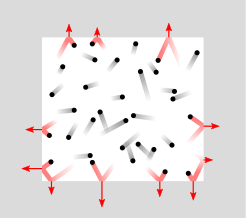
Image: Pressure exerted by collisions - Becarlson © Wikimedia Commons under the Creative Commons Attribution-Share Alike 3.0 Unported license
You will have encountered pressure as you blow up a balloon or a tyre on your bike. The pressure is the force of the air inside pushing outwards against the wall of the tyre or the rubber of the balloon.
If you pump or blow more air into a tyre or balloon the pressure increases.
Think about our bottle of air sealed at 4,267 metres of altitude; once the bottle is brought down the mountain the air pressure outside of the bottle is much greater than the air pressure inside the bottle so the bottle is crushed.

- As well as altitude air pressure is affected by rising and sinking currents of air.
- Where bodies of air at the surface of the Earth are warmed; they expand and the air becomes lighter than the air above so it rises.
- Rising currents of air create areas of low air pressure.
- These can be seen as ‘bands’ on the surface of the Earth.
- The bands change with the seasons.
- Land and sea warms up and cools down at different rates so the bands can be broken up by the continents and oceans.

Image: Mslp-jja-djf - William M. Connolley © Wikimedia Commons under the Creative Commons Attribution-Share Alike 3.0 Unported license (attr: William M. Connolley at the English language Wikipedia)
15 year sea level average air pressure; June, July & August = top map; December, January & February = bottom map.
Global Pressure Belts
Where the sun is directly overhead (over and just North and South) of the Equator the air is warmed the most becomes lighter and rises.
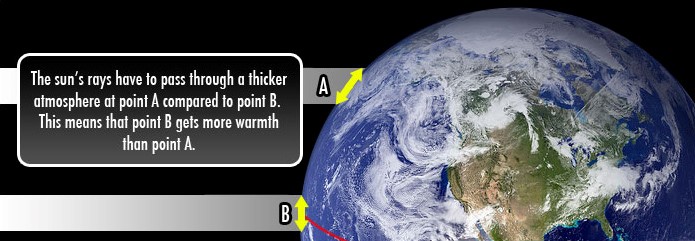
Image: Sun Rays and the Atmosphere - GitN Edition 6
The rising air cools and water vapour condenses into rain.
This creates a band of rain and low air pressure on or around the Equator which moves North and south as the seasons change.
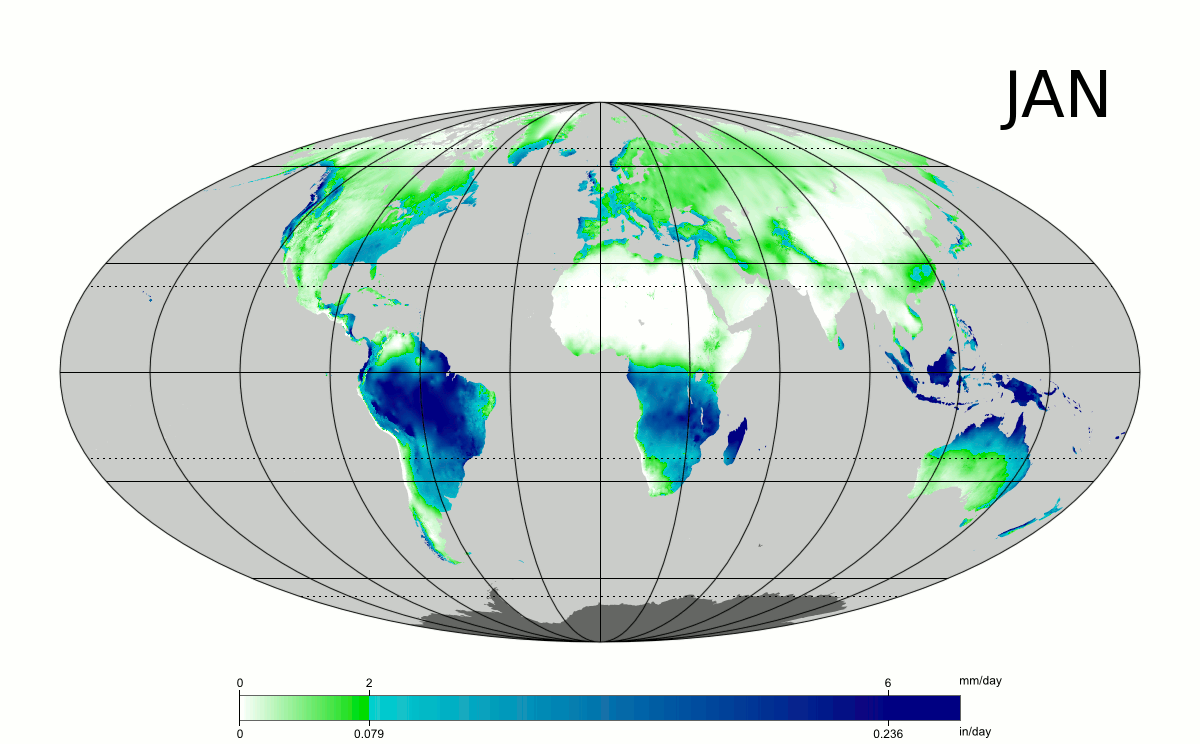
Image: MeanMonthlyP - PZmaps © Wikimedia Commons under the Creative Commons Attribution-Share Alike 3.0 Unported license
The band of clouds can be seen on satellite images.
The band of clouds is caused by air rising which causes low air pressure.
The clouds form rain and this where we get rainforests forming.
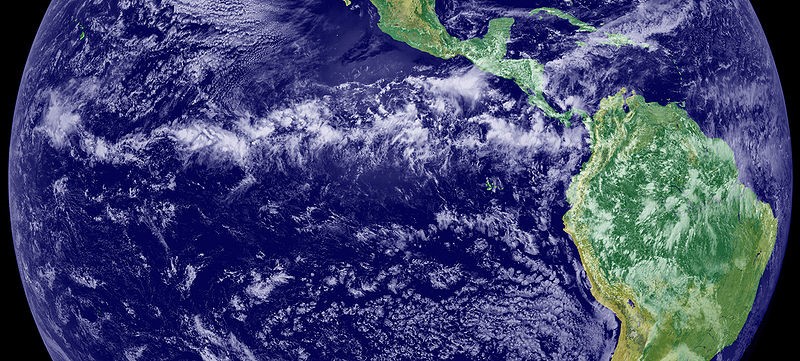
Image: MeanMonthlyP © Wikimedia Commons
Eventually the air will cool and form a convection cell.
In a convection cell warm air (convection can occur in any liquids or gasses) rises.
After rising it cools and starts to sink.
The rising and sinking air forms roughly circular currents.
The most heat is received along the Equator; the air rises and splits into two convection cells. One to the North and one to the south.
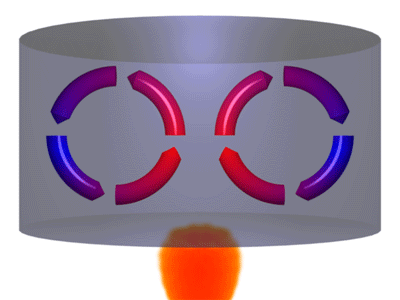
Image: Convection - User:Oni Lukos © Wikimedia Commons under the Creative Commons Attribution-Share Alike 3.0 Unported license
Where the air sinks it creates a band of high pressure. This is at roughly latitudes 38˚North and 38˚South.
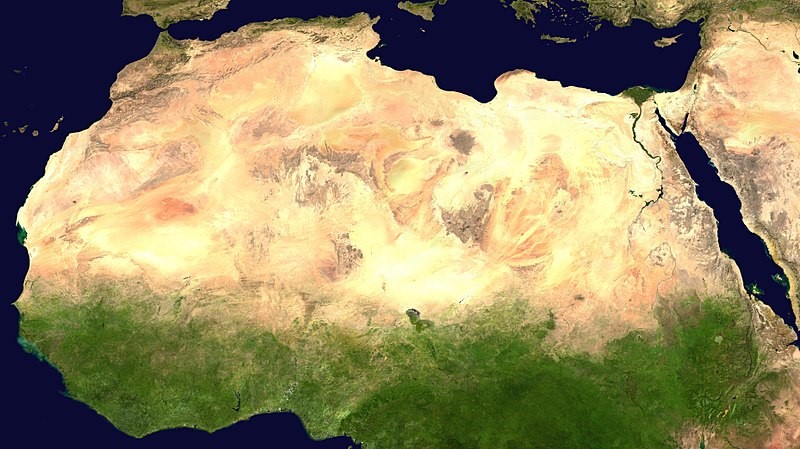
Image: Sahara satellite hires © Wikimedia Commons
As air sinks it warms and any clouds/water vapour is evaporated so the skies are clear – this is where and why we get hot deserts like the Sahara Desert at these latitudes.
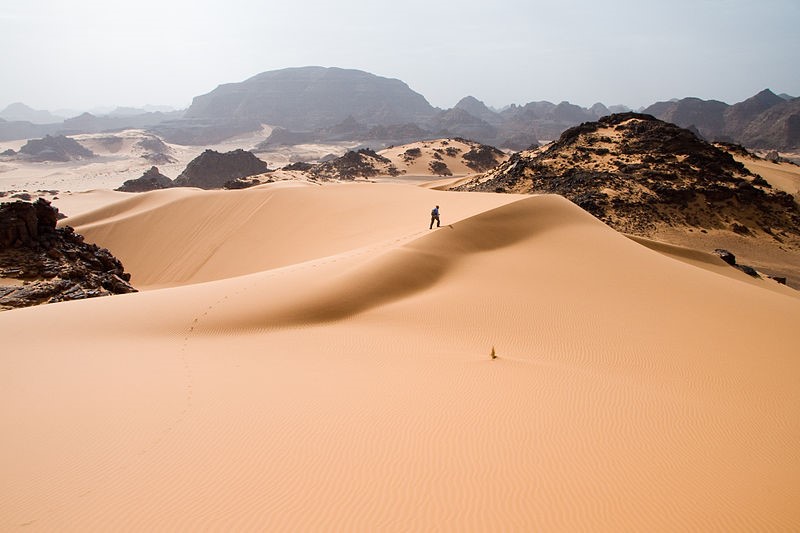
Image: Libya 4985 Tadrart Acacus Luca Galuzzi 2007 - Lucag © Wikimedia Commons under the Creative Commons Attribution-Share Alike 2.5 Generic license
Further North and South the air splits into a further two convection cells in each hemisphere.
Three convection cells in each hemisphere creates the bands on low air pressure (air rising) and the bands of high air pressure (air sinking).
Two of the convection cells are named after the people who discovered them (Hadley & Ferrel) the third is named after the Polar region where it is found.
These cells also cause the main winds at the surface where air is flowing from the areas of high pressure back to areas of low air pressure.
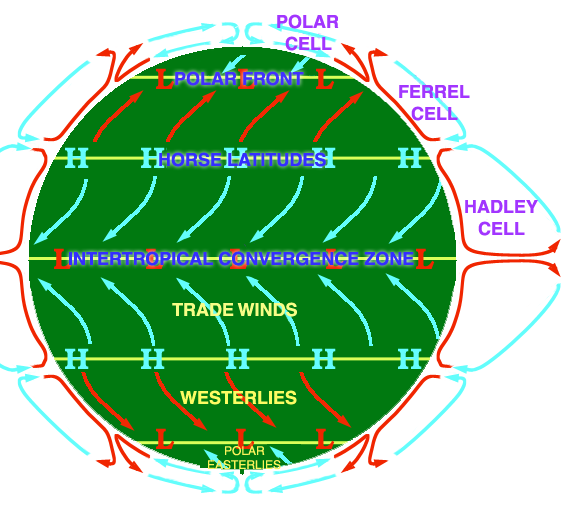
Image: AtmosphCirc2 - DWindrim © Wikimedia Commons under the Creative Commons Attribution-Share Alike 3.0 Unported license

